Achieving climate goals requires a targeted and demand-driven expansion of distribution grids. However, the necessary processes and decision-making are far from trivial and pose a significant challenge for distribution grid operators.
The primary issues stem from the low transparency of the current grid situation and existing grid capacity – especially at the low-voltage level –, and the high uncertainty about where and when new power generators and loads will be added. Limited IT and personnel resources for conducting and evaluating extensive calculations only intensify these issues. As a result, planning for expansion or reinforcement measures is often based on a few reference grids – a method that becomes increasingly inaccurate considering the current dynamic developments in the grid.
Our Grid Study app addresses exactly this problem: It allows you to create various detailed EV, heating, generation and storage scenarios in just a few steps. By specifying the future distribution of heat pumps, PV systems, and charging points, these scenarios can be comprehensively assessed for individual grids or the entire grid area. With the Grid Study, you can minimize uncertainties in forecasting future grid loads and bring to light the ‘blind spots’ in strategic grid planning in detail.
What you can use Grid Study for
With this app, you can integrate various energy transition scenarios into your grid model and accurately determine the future reinforcement or expansion needs.
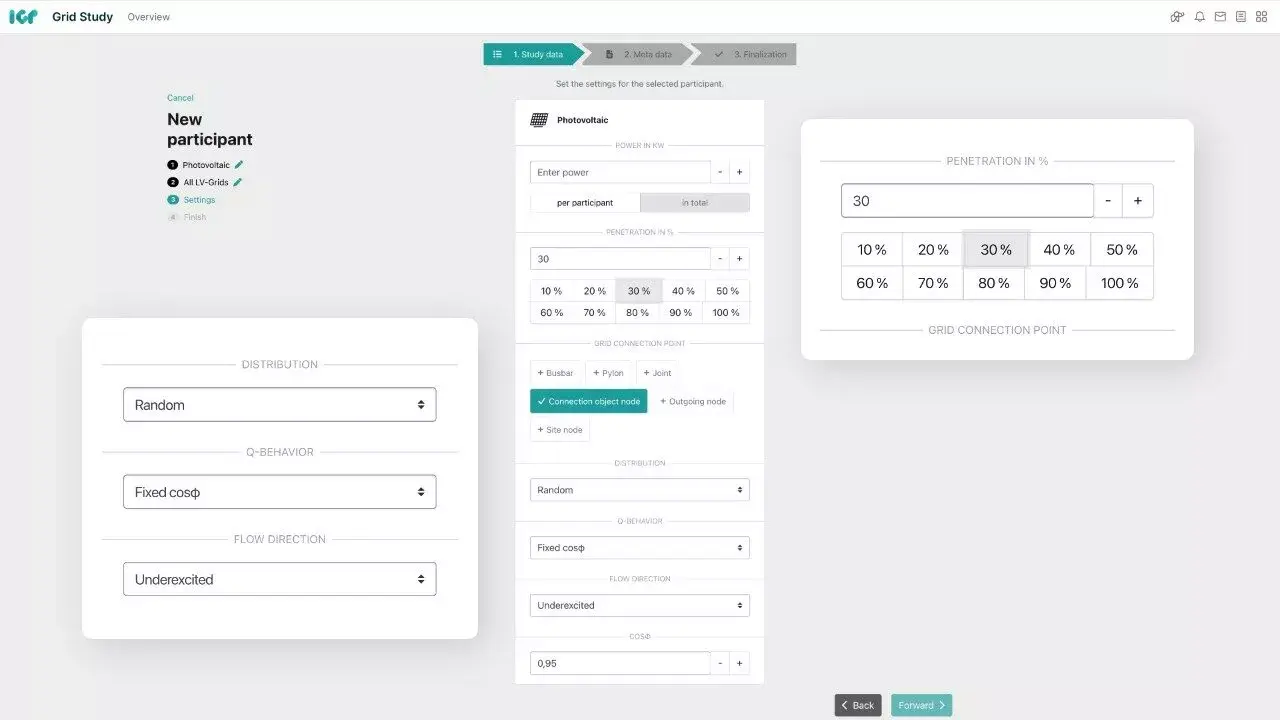
Easy specification of framework data for scenarios
The app allows you to easily add new grid elements within the existing grid functions. You can define a variety of parameters for each grid element type, such as connection capacity, annual energy consumption, or reactive power behavior for new generation units. The grid scenario definition can be done either by specifying future penetration rates based on an electrification futures study, with the new units being automatically distributed across the grid area, or precisely for each connection point via an API. This enables the integration of high-resolution scenario data, such as from municipal heat planning.
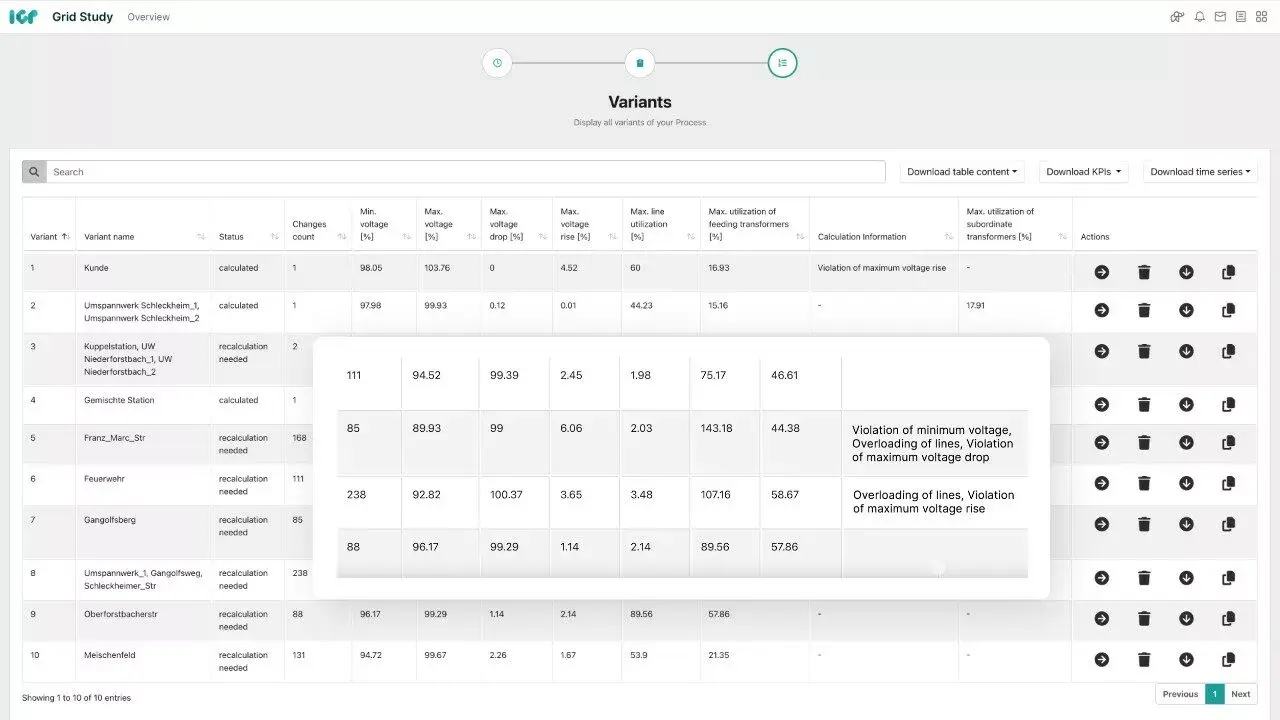
Detailed evaluation based on load flow simulations
The impact assessment, such as forecast of bottlenecks or possible voltage limit violations, is carried out individually for each grid complex in your area using load flow simulations with time series data or based on coincidence factors. Each asset is individually considered and evaluated, providing important information on which grid areas are at risk of overloading in the future. Additionally, you directly get a list of KPIs with the main results of the scenario, such as the number of overloaded assets.
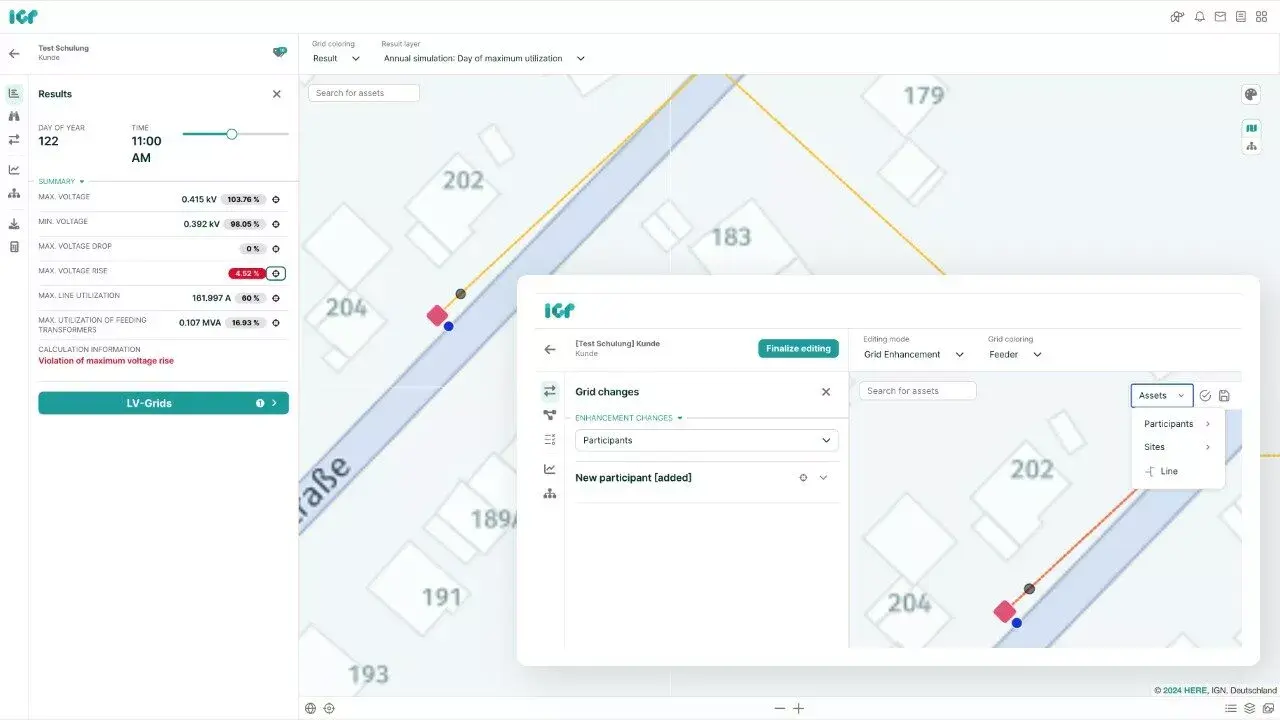
Direct interface to grid planning
Within a Grid Study, a variant is created for each grid complex in your grid area. The individual variants can then be transferred to the Grid Planning app with one click. This enables further processing of future grid scenario results and determining suitable measures for short- or medium-term grid reinforcement and strategic grid planning.
Already convinced? Then contact us for more information and a live walk-through:
Not entirely sure yet? Read on!
3 reasons why you will love our Grid Study app

Proactive grid planning
The application enables you to simulate the impacts of an anticipated increase in heat pumps, charging points, and PV systems on your grid. This allows you to forecast potential bottlenecks in the grid early and implement a proactive grid planning strategy.

Better investment decisions
The app provides a solid decision-making basis for planning grid reinforcement and expansion measures that are necessary in the future. Through precise analysis, you can avoid redundant construction measures in an area over the long term, leading to significant cost savings.

Detailed evaluation basis
The basis for the Grid Study app is a detailed evaluation, including time series simulations, for a complete, computational model of your grids. Calculations are no longer based on just a few reference grids but run individually for each grid section of your entire grid area.
Rainer Loeber
Head of Electricity Department at Travenetz
Like all grid operators, we are facing a significant increase in grid connection requests. With the IGP, we consider ourselves optimally prepared for this challenge and other aspects of the energy transition. In addition to the technical grid connection assessment, which has been smoothly integrated into the registration process at TraveNetz, we can, for example, use future grid scenario analyses created with the ‘Grid Study’ application as an important aid in investment decisions for grid expansion.
You might find this interesting
Want to see our tool for the evaluation of future grid scenarios live?
Then send us a quick note and we’ll get in touch with you as quickly as possible.
Contact person
Dr. Tobias Falke
VP Global Sales & Marketing

Common questions we hear about our tool for the evaluation of future grid scenarios
Absolutely. You specify the study parameters yourself – regardless of whether they come from you or an external service provider. For instance, some of our customers work with different research institutes to gather this data and subsequently use it to create future scenarios in our Grid Study app.
You can easily create the studies in the user interface (simplified mode). Alternatively, it is possible to create more complex and very specific studies via an API.
All our apps run based on our Grid Hub – the heart of the Intelligent Grid Platform and the basis for all calculations for your grids. Installing the Grid Hub includes data integration and cleansing, and this is the first step that takes about 6 months. Although this might sound like a long endeavour, thanks to this you’ll end up with a grid model that includes your entire grid area (and not just a few reference grids), is computational and updated automatically on a regular basis.
After that, the Grid Study app only needs to be activated and does not require further grid data integration or preparation.

.png)
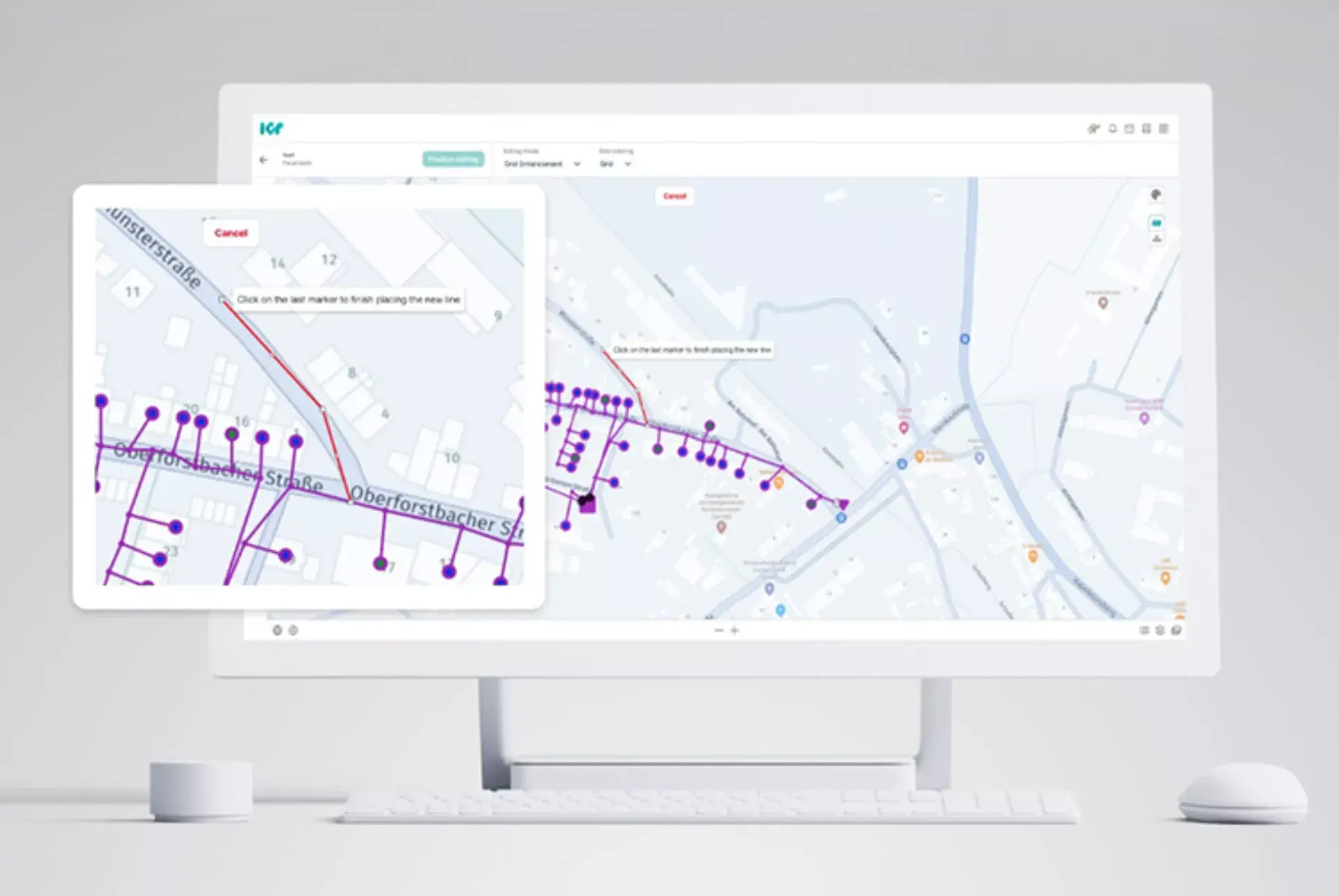
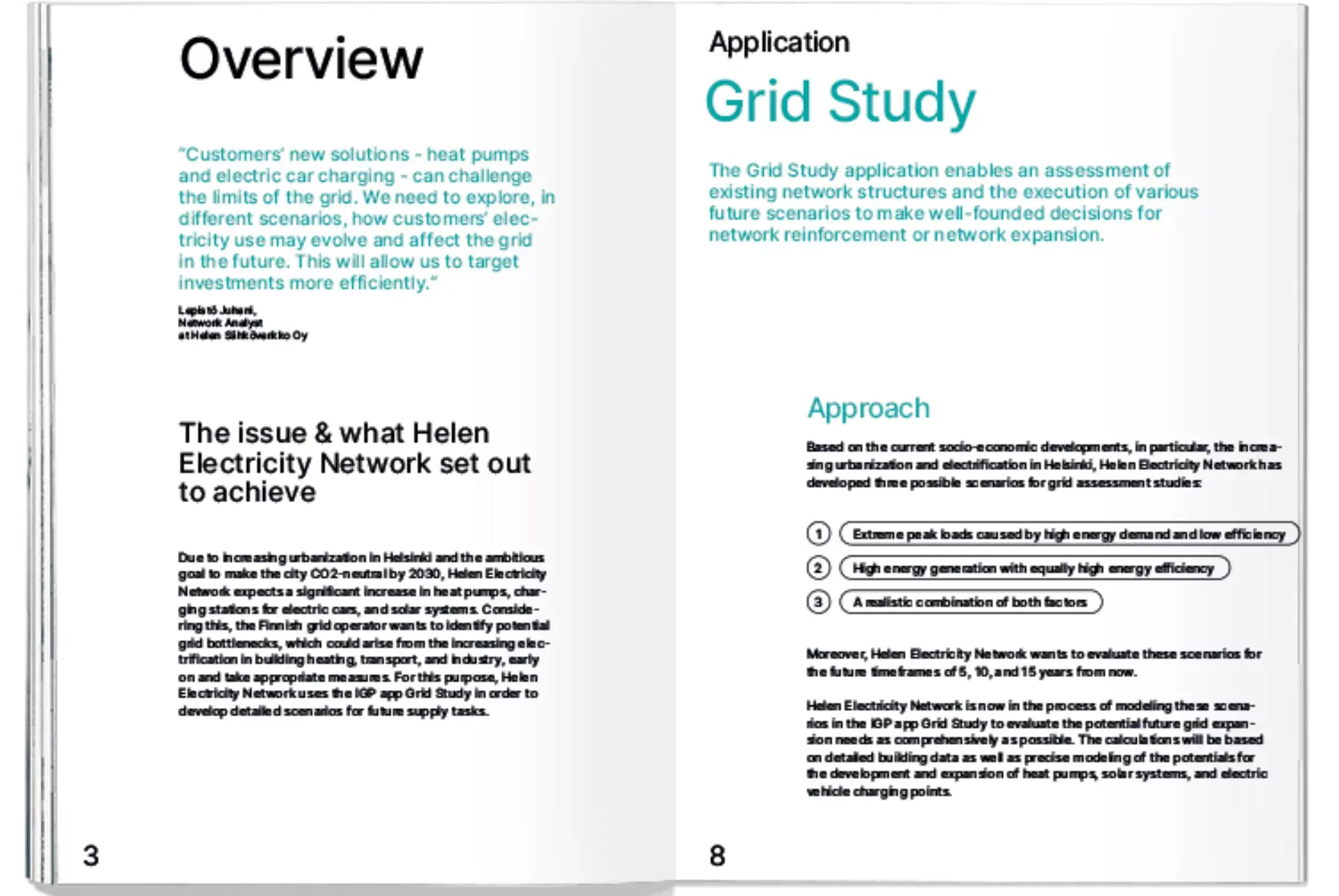
.webp)